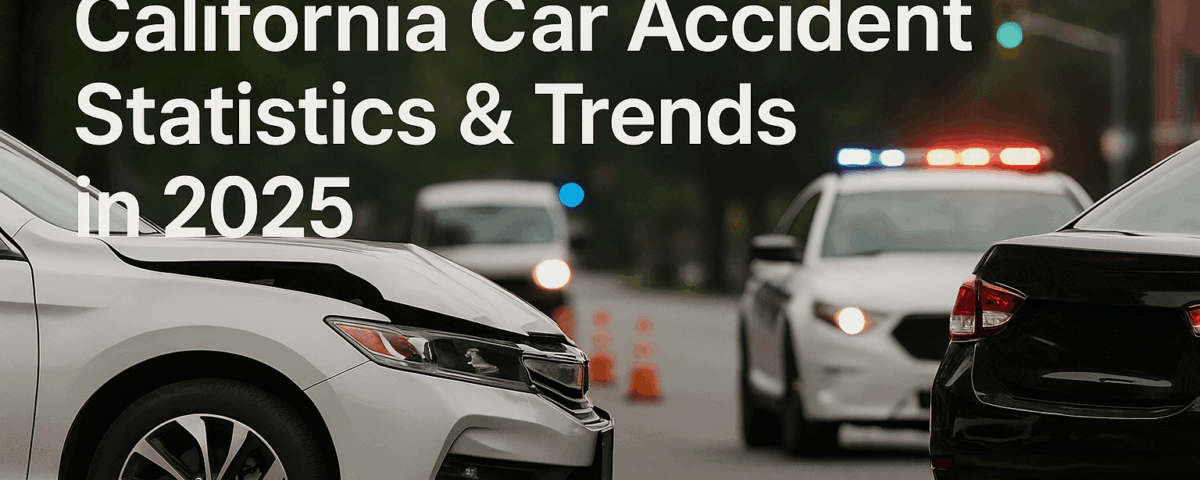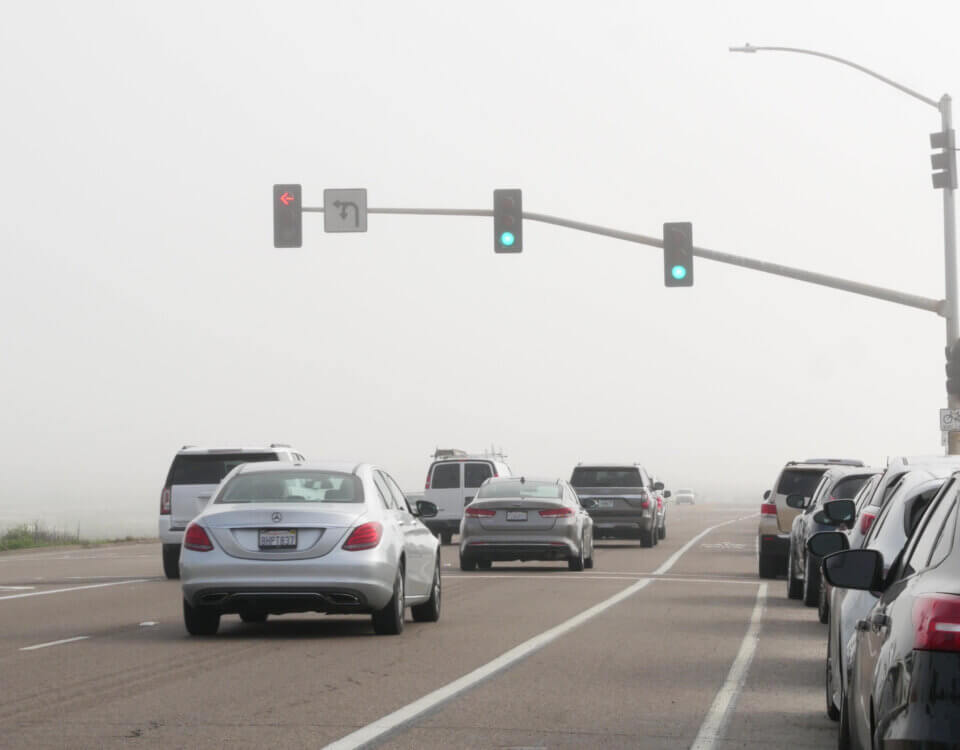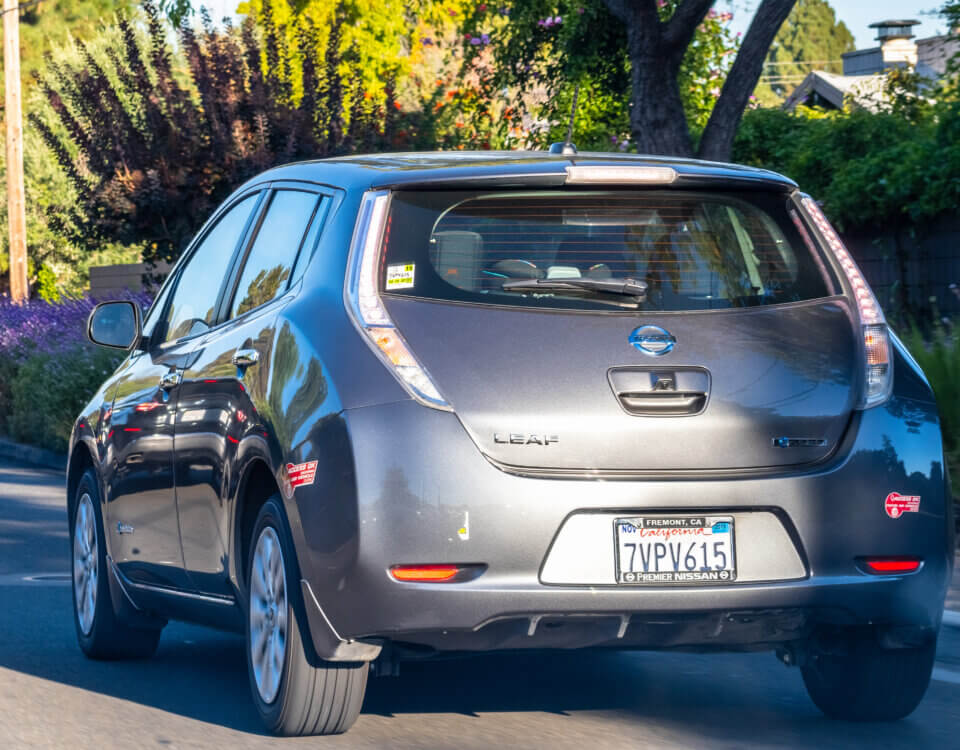California’s traffic safety picture improved in 2023 and continued trending in the right direction through 2024 nationally. Fatalities in California fell year over year, with meaningful declines for pedestrians, motorcyclists, alcohol-impaired crashes, and unrestrained occupants. Early rollouts of automated speed enforcement in 2025, Vision Zero corridors, and ongoing enforcement and education are key policy levers to watch.
At-a-Glance: California’s Latest Official Totals
All figures below are statewide and reflect the most recent official California Office of Traffic Safety (OTS) “Quick Stats” update, which compiles SWITRS and FARS data. The OTS page was updated July 2025 and reports 2023 results with 2022 comparisons. (Office of Traffic Safety)
| Metric | 2022 | 2023 | Change |
|---|---|---|---|
| Total traffic fatalities | 4,539 | 4,061 | ▼ 10.5% |
| Mileage Death Rate, deaths per 100M VMT | 1.34 | 1.26 | ▼ 6% |
| Alcohol-impaired fatalities (BAC ≥ 0.08) | 1,419 | 1,355 | ▼ ~4.5% |
| Unrestrained passenger vehicle occupant fatalities | 853 | 780 | ▼ 8.6% |
| Motorcycle fatalities | 649 | 583 | ▼ 10.2% |
| Motorcyclist deaths not wearing a helmet | 43 | 33 | ▼ ~23.3% |
| Teen drivers involved in fatal crashes (15–20) | 476 | 428 | ▼ ~10.1% |
| Pedestrian fatalities | 1,213 | 1,106 | ▼ ~8.8% |
| Bicycle fatalities | 183 | 145 | ▼ ~20.8% |
Source: California OTS Quick Stats. (Office of Traffic Safety)
2025 Context: What the trajectory looks like now
- National early estimates for 2024 show continued improvement. NHTSA estimates 39,345 U.S. traffic deaths in 2024, down about 3.8% from 2023. The national fatality rate fell to 1.20 per 100 million VMT, the lowest since 2019. California’s rate in 2023 was 1.26, so there is room to drop further toward the national average if 2024–2025 progress holds. (NHTSA)
- Quarterly direction has been consistently downward since mid-2022. NHTSA reported multiple consecutive quarters of declines in 2023–2024, which aligns with California’s 2023 improvement. (NHTSA)
- Policy changes in 2025 focus on speed management. California’s automated speed enforcement pilot under AB 645 is now live in San Francisco and moving toward deployment in other authorized cities. Early 2025–2026 milestones are worth tracking for safety impacts. (SFGATE)
Key Trends Californians Should Know
1) Fatalities fell across several high-risk categories
California’s 2023 drop in total deaths followed declines in alcohol-involved, pedestrian, bicyclist, and motorcycle fatalities. That is notable because those categories had driven much of the post-2020 spike. Continued reductions will depend on speed management, impaired-driving enforcement, and safer street design. (Office of Traffic Safety)
2) Risk exposure is normalizing
Mileage Death Rate fell from 1.34 to 1.26 in 2023. Nationally, NHTSA’s early estimates show the 2024 fatality rate down to 1.20 per 100M VMT, even as driving increased. This suggests risk per mile is trending down, not just total counts. (Office of Traffic Safety)
3) Pedestrian safety remains a priority
California pedestrian deaths fell about 8.8% in 2023. National analyses still show elevated pedestrian risk compared with pre-2019 baselines, so California’s design and enforcement focus in 2025 is timely. (Office of Traffic Safety)
4) Speed is in the spotlight
California’s AB 645 pilot authorizes automated speed enforcement in Los Angeles, San Francisco, San Jose, Oakland, Long Beach, and Glendale. San Francisco activated 33 cameras and began issuing citations on August 5, 2025. Oakland plans up to 18 cameras online by late 2025. Los Angeles is targeting 2026 for its rollout. These programs will generate California-specific evidence on speed and crash severity reductions. (SFGATE)
What is driving the improvement
- Enforcement and behavior: Focused DUI enforcement, seat belt campaigns, and speed management strategies correlate with the 2023 declines in alcohol-involved, unrestrained occupant, and speeding-related deaths. (Office of Traffic Safety)
- System design: Cities are building out Vision Zero corridors, daylighting intersections, and calming speeds. Automated speed enforcement is expected to compound those benefits by reducing high-end speeding where cameras are deployed. (Los Angeles Department of Transportation)
- Post-pandemic normalization: National VMT increased while fatality rates fell in 2023–2024, a sign that extreme risk behaviors from early pandemic years are moderating. (NHTSA)
Policy and Program Changes to Watch in 2025
- Automated speed enforcement pilot expansion details:
- San Francisco: 33 active cameras, citations started August 5, 2025. (SFGATE)
- Oakland: Up to 18 cameras, planned to come online fall or winter 2025. (Oakland)
- Los Angeles: LADOT preparing for program launch, with deployment currently targeted for 2026. (Los Angeles Department of Transportation)
- State updates: The DMV notes additional 2025 safety laws, including a Malibu speed safety pilot similar to AB 645 pilots. (California DMV)
- Caltrans highway network reporting: Caltrans publishes annual collision data specific to the state highway system, useful for corridor-level analyses and countermeasure planning. The 2023 book is the latest release as of April 2025. (Caltrans)
Frequently Asked Questions
Are 2024 California statewide totals final yet?
Not yet. California publishes official statewide totals after data are finalized in SWITRS and FARS. For 2025 planning, use the 2023 California figures above, plus NHTSA’s national 2024 early estimates to understand directionally where risk is headed. (Office of Traffic Safety)
What is the single most effective lever for reducing severe crashes?
Speed management. Lower speeds reduce crash likelihood and severity. California’s 2025 speed camera pilot aims to cut dangerous speeding on the streets that produce the most serious injuries and deaths. (Los Angeles Department of Transportation)
Where can I pull city or corridor-level numbers?
Use UC Berkeley’s Transportation Injury Mapping System (TIMS) to query the Statewide SWITRS Summary, map collisions, and export data for custom analyses. (TIMS)
How to cite these figures on your website
- California statewide 2023 results and category breakdowns: California Office of Traffic Safety, “Traffic Safety Quick Stats,” updated July 2025. (Office of Traffic Safety)
- National 2024 early estimates: NHTSA press release and Early Estimate report. (NHTSA)
- Automated speed enforcement pilot details: LADOT Speed Safety System, City of Oakland Speed Safety Cameras, DMV “New Laws in 2025,” and coverage of San Francisco activation. (Los Angeles Department of Transportation)
- Highway network crash books: Caltrans Annual Collision Data. (Caltrans)
Note: These blog posts are created solely for the use of Hillstone Law. The information is gathered from internet research, publicly available sources, and artificial intelligence (AI) tools such as ChatGPT. While we aim to share helpful and educational content, Hillstone Law does not independently verify every detail. Some information may be incomplete, outdated, or subject to change without notice. If you believe any part of a post is inaccurate, misleading, or infringes upon copyright, please contact Hillstone Law immediately so we can review it and take appropriate action, including correction or removal.
Disclaimer: The material provided in these blogs is for general informational purposes only and should not be considered legal advice. Reading these posts does not create, and is not intended to create, an attorney-client relationship with Hillstone Law. Our intent is to share knowledge, raise awareness, and provide helpful resources to the public; however, Hillstone Law makes no warranties or guarantees about the accuracy, completeness, or reliability of the information provided, and expressly disclaims liability for any actions taken in reliance on it. The photos used in these posts are for illustrative purposes only and do not depict actual clients, individuals, or incidents unless expressly stated. If you or a loved one has been injured in an accident, please contact Hillstone Law at (855) 691-1691. Our attorneys are available to answer your legal questions and help you understand your rights.








